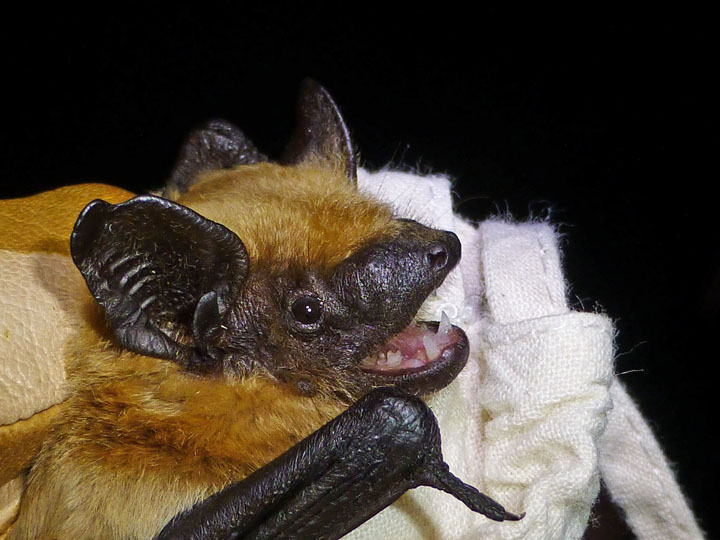Dec 13 - New Bat Species for Gibraltar
 A new species of bat to Gibraltar, the Isabelline Serotine Eptesicus isabellinus, was captured during a recent netting session at the Gibraltar Botanic Gardens.
A new species of bat to Gibraltar, the Isabelline Serotine Eptesicus isabellinus, was captured during a recent netting session at the Gibraltar Botanic Gardens.
This is one of the highlights of a collaborative study of Gibraltar’s bats by the Gibraltar Museum and GONHS with the help of a team of specialists from the UK. The project, supported by the Ministry for the Environment aims to establish a better understanding of our local bats' habits and monitor resident and non- resident species over the next three years.
During the few days the team was in Gibraltar, various sites were visited including caves and tunnels where roosts and colonies have been found.
The Isabelline Serotine occurs north of the Sahara, from Morocco to Libya. It has also been found on the Canary Islands and it is present in the south of the Iberian Peninsula. The Isabelline Serotine is similar to its European counterpart the Serotine Bat (Eptesicus serotinus), though with a lighter coloured fur, ears and snout. This species favours habitats with dense vegetation and access to areas of water. It is believed to be a crevice-dweller.
Mr James Shipman, a bat specialist from the Berkshire and South Buckinghamshire Bat Group, explained that he is confident that Gibraltar has all the characteristics to make it a prime site for bats and that he expects the species list for Gibraltar to increase as the study continues. ‘I am convinced that not only are there more resident species here in Gibraltar, but there are indications that Gibraltar is a prime site for bat migration. It’s a very exciting project where we are hoping to not only work on bats but also try to inform people about bats and how they are not ‘scary animals’ like many people believe.
The GONHS bat group, co-ordinated by Mr Albert Yome, welcomed this study which links in perfectly with the hard work they have been conducting over the past six years in monitoring bats in Gibraltar, as well as participating in International Bat Night as part of the Eurobats Agreement.
The Gibraltar Museum Cave Unit has been taking the group to different cave and tunnel sites around Gibraltar, which they have been monitoring over the years. Mr Stewart Finlayson, head of the GMCU explained how it is a wonderful experience to be working alongside the GONHS and the team from the UK. ‘We hope this project will yield some excellent results shortly and are looking forward to this collaboration.’ Members of the public are encouraged to contact the team if they have found/ find any bats living within their homes. Many bats can be found within chimneys, attics and buildings. These animals should not be disturbed as they are protected under the Nature Protection Act, but informing the team would assist this project hugely.






